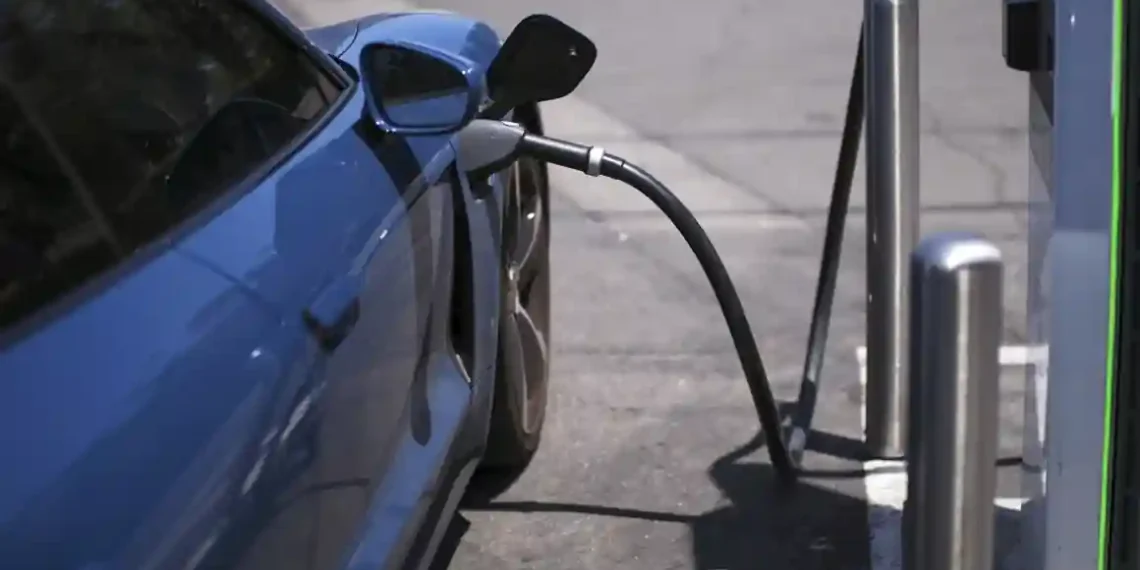Federal Tax Credits for EVs Are Ending—But Is It Still Worth Buying One?
The federal government’s long-standing tax incentives for electric vehicles (EVs) are coming to an end. Congress officially passed legislation that terminates those benefits, and buyers now have until September 30 to qualify for up to $7,500 on new EVs and $4,000 on used ones. After that, those credits will no longer be available.
So what does this mean for drivers considering a switch to electric? According to experts, EVs are still worth it, even without the federal boost.
Why the Tax Credit Matters
Until now, these credits helped bridge the price gap between electric and gas-powered vehicles. New EVs average about $9,000 more than comparable gas cars, while used EVs cost roughly $2,000 more, according to Kelley Blue Book.
That federal support, along with various state-level incentives, made EVs more accessible—especially for lower- and middle-income buyers.
“This is really disappointing,” said Ingrid Malmgren, Senior Policy Director at Plug In America. “These credits were a great way to lower the cost burden of transportation energy for everyday people.”
Still Cheaper to Drive and Maintain Long-Term
Even without federal tax credits, EVs remain cheaper to own over time, Malmgren says. That’s largely due to lower fuel and maintenance costs.
“Very quickly, you’re spending less than you would with a gas car,” she said. “EVs cost much less to fuel and need far less maintenance.”
EVs don’t require oil changes and have fewer moving parts than internal combustion engines. This translates into lower upkeep and repair costs. The exact savings will vary based on how much you drive, local electricity rates, and fuel prices, but the long-term math still favors EVs.
What the Research Shows
A 2020 study published in the journal Joule found that, on average, U.S. EV drivers saved around $7,700 on fuel over 15 years, even without factoring in tax credits or maintenance costs. In states with lower electricity prices—like Washington—drivers could save over $14,000.
Many online tools now help consumers estimate when their EV investment breaks even compared to a gas car.
EVs Remain the Cleaner Choice—Even with Coal Power
Some skeptics point to the pollution involved in manufacturing EVs or the emissions tied to coal-generated electricity. But experts say the overall carbon footprint of an EV is still significantly lower.
Once an EV reaches about 15,000 miles, it typically becomes less polluting than a gas vehicle, said Peter Slowik, a transportation researcher at the International Council on Clean Transportation.
By the end of its life, an EV’s total emissions are around 50% lower than those of a comparable gas-powered vehicle, according to the U.S. Department of Energy.
Cleaner Across the Board—Even in Coal States
A 2023 study by Yale Climate Connections showed that even in coal-reliant states like West Virginia, EVs still produce 31% less carbon pollution than gas cars.
That’s because EVs are far more energy-efficient. For example, Tesla’s Model Y and Model 3 can travel over 100 miles on the energy equivalent of a gallon of gas.
“If you’re comparing that to a car that gets 25 mpg,” said Slowik, “you’re looking at four to five times the energy efficiency.”
Bottom Line: EVs Still Make Sense—Even Without the Tax Break
While the loss of federal incentives is a major shift, experts agree that EVs remain a smart financial and environmental choice—especially for drivers planning to keep their vehicles for several years.
Whether you’re motivated by long-term savings, lower maintenance, or a reduced carbon footprint, there’s still plenty of value in going electric.
Key Takeaways
-
Federal EV tax credits end Sept. 30, 2024
-
EVs cost more upfront but are cheaper to operate
-
Drivers can save $7,000–$14,000+ on fuel over 15 years
-
EVs emit less carbon—even when charged with coal power
-
Experts say EVs remain the more efficient and cleaner choice
This article was rewritten by JournosNews.com based on verified reporting from trusted sources. The content has been independently reviewed, fact-checked, and edited for accuracy, neutrality, tone, and global readability in accordance with Google News and AdSense standards.
All opinions, quotes, or statements from contributors, experts, or sourced organizations do not necessarily reflect the views of JournosNews.com. JournosNews.com maintains full editorial independence from any external funders, sponsors, or organizations.
Stay informed with JournosNews.com — your trusted source for verified global reporting and in-depth analysis. Follow us on Google News, BlueSky, and X for real-time updates.














